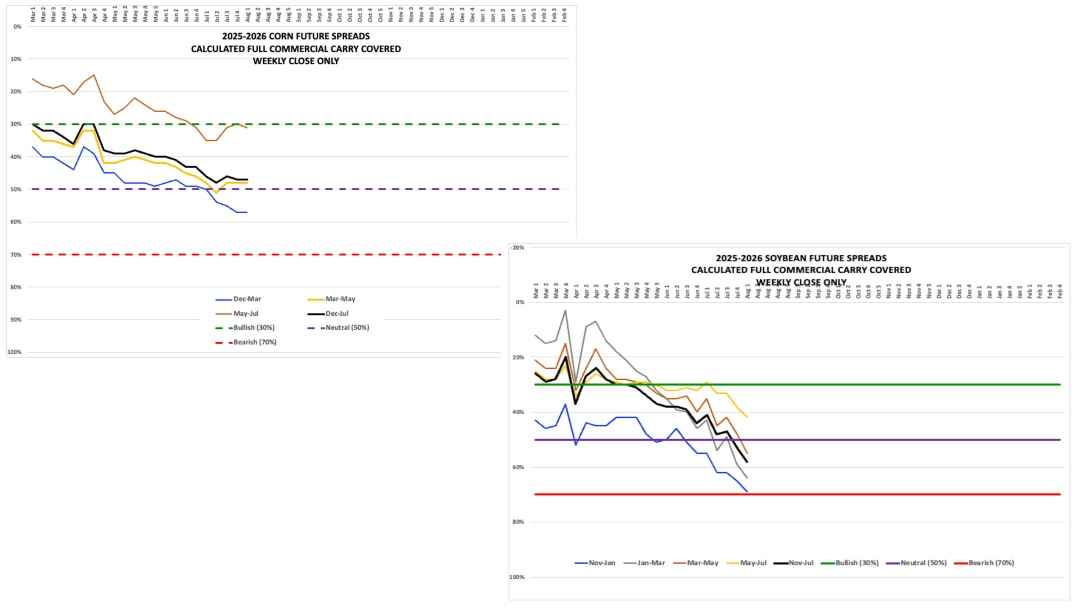Corn, Soybeans and the Gamble
Lessons in Timing From the 2025 Harvest
The 2025 U.S. corn and soybean harvests are either fast approaching or already here, depending on your location, bringing with it the annual question of what to store and what to sell. The move to harvest season also means it’s time for a discussion of what Kenny Rogers told us many decades ago, something I call “The Gambler’s Secret.”
At this point, feel free to have the song “The Gambler” playing on a loop in the background as you read this piece. When you get to the part that says, “Every gambler knows that the secret to survivin’ is knowin’ what to throw away and knowin’ what to keep.”
Two Paths for Harvest Planning
When it comes to U.S. agriculture, the lesson here is knowing what to sell, even if prices are low (throw away), and knowing what to hold in storage, private or commercial, (keep). While the answer is relatively simple, it also depends on actions taken leading up to harvest. We can simply put this into two categories: Those who have done some price protection strategies along the way and those who are open on price.
Now, “for a taste of your whisky, I’ll give you some advice.”
Let’s start with the former group, those who have some price protection in place. For this discussion, let’s say the U.S. producer has roughly 80% of expected corn production hedged with short December 2025 futures and about the same amount of expected soybean production hedged with short November 2025 futures. Average prices will vary by individual, depending on how aggressive sales were made over the past few years.
To make the decision on what to store and what to sell, we have two factors to evaluate:
- How much total commercial carry is covered by futures spreads.
- Seasonality of national average basis.
Seasonally Flat-to-Firm Markets
Seasonally, the national average basis markets for both corn and soybeans are relatively flat-to-firm from the first week of September through the last week of June, putting the spotlight on futures spreads.
As of this writing, soybean futures spreads cover more calculated full commercial carry than their corn counterparts meaning the opportunity to improve one’s position is greater in soybeans than corn.
As of early August, short November futures hedges could start to be rolled out to January covering roughly 70% of full commercial carry. The January to March, March to May, and so on. In corn, the nearby December to March futures spread covered less than 60% in early August, with the deferred May to July at 31%. This indicated there is less incentive to roll short hedges forward to improve one’s price.
Theoretically, then, it would seem better to store soybeans and take advantage of the stronger carry through the spring and summer of 2026 while selling 2025 corn at or shortly after harvest, but we need to keep an eye on how markets change over time. As the song says, “Cause every hand’s a winner, and every hand’s a loser ... .”
Producers Like to Store Corn
There are two glaring differences between theory and reality though:
- U.S. producers like to store corn and sell soybeans, regardless of what futures spreads are showing.
- Most U.S. producers don’t have many, or any, short hedges in place heading into harvest to begin with.
Let’s Talk Strategy
Which brings us to a more realistic discussion of strategy, setting aside the last line of the song’s verse, “And the best that you can hope for is to die in your sleep.”
While that may seem the most attractive alternative at this point, let’s find other strategies. If a producer has little to no expected production sold, either corn or soybeans, the futures spreads are indicating corn is less bearish long-term than soybeans. How do we know this? Again, corn futures cover less full commercial carry than soybeans.
Additionally, if we think about the position of noncommercial traders, this group has held a net-short futures position in corn and net-long position in soybeans for much of the spring and summer. If we see funds move to get back in line with fundamentals it would mean soybean futures would move lower and corn higher over time. If so, this would play into the more popular post-harvest strategy of holding corn in storage and selling soybeans at or shortly after harvest.
But like the song, maybe you too, will find “an ace that you can keep.”


